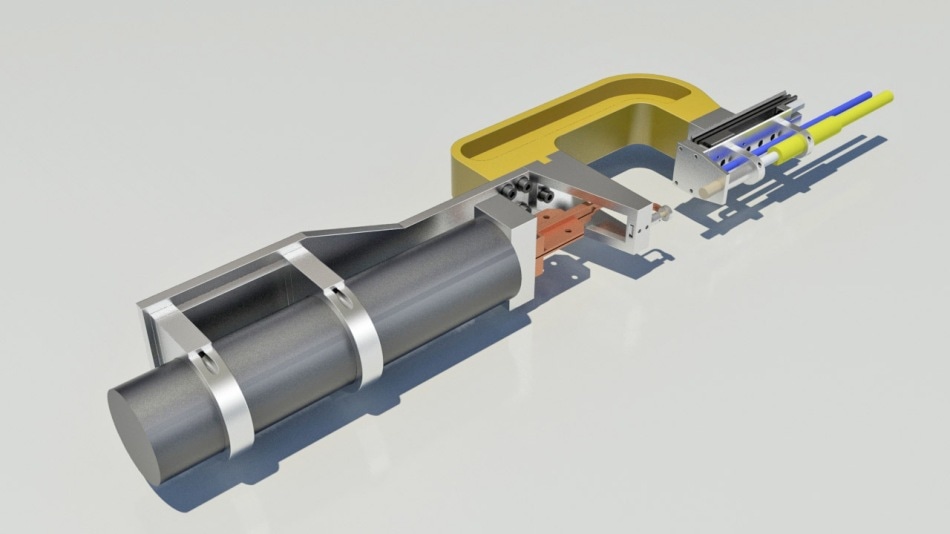Jan 25 2019
A joining gun that forms a bond between metal and thermoplastic materials within a matter of few seconds has been created by the researchers at the Fraunhofer Institute for Material and Beam Technology IWS in Dresden.
 The joining gun bonds metal and plastic in seconds and can be mounted on a robot arm in place of a spot welding gun, for example. (Image credit: Fraunhofer IWS)
The joining gun bonds metal and plastic in seconds and can be mounted on a robot arm in place of a spot welding gun, for example. (Image credit: Fraunhofer IWS)
This gun is designed in a modular fashion and can easily be incorporated into the production process, for instance, by mounting on a robot arm as a replacement for a spot welding gun. At the preview leading up to the Hanover Trade Fair on January 24th, 2019, on the trade fair grounds in Hall 19, researcher Annett Klotzbach will be illustrating the uses of the joining gun.
The HeatPressCool-Integrative Process HPCI
Due to the different physical properties of plastics and metals, the connection between them creates a challenge. All traditional joining options like bonds using rivets or adhesives have their own drawbacks: Plastics can be easily damaged during riveting and adhesives require time to set, which slows down further processing. Moreover, riveting and adhesive bonding need additional materials which increase production costs.
The joining gun incorporates the HeatPressCool-Integrative process, developed at the Fraunhofer IWS Dresden, allowing the direct and precise bonding between plastic and metal parts within seconds. In this process, the two materials are pressed together and the metal at the bonding point is exposed to targeted inductive heat. This results in the partial melting of the thermoplastic material, which in turn directly creates a strong bond with the metal as the plastic hardens.
More Stable Connection by Pre-Treatment of the Metal
In order to optimize the adhesion between metal and plastic for producing anchoring structures, the scientists at Fraunhofer IWS pretreat the metal with lasers.
The special feature of this process is that we use laser ablation to drill relatively deeply into the metal, to a depth of up to a hundred micrometers, where the plastic can penetrate and then cool down, contract and form a secure fit in this structure. This generates a highly stable bond.
Annett Klotzbach, Researcher, Fraunhofer Institute.
Easy Application in Proven System Technology
A modular structure is offered for incorporating the joining gun into the existing system technology in manufacturing operations. For instance, it can be mounted on a robot arm replacing a spot welding gun. The joining gun finds application in all areas where plastics and metal have to be precisely bonded, for example, for stainless steel panels in dishwashers or refrigerators, or in vehicle body construction in the automotive industry.